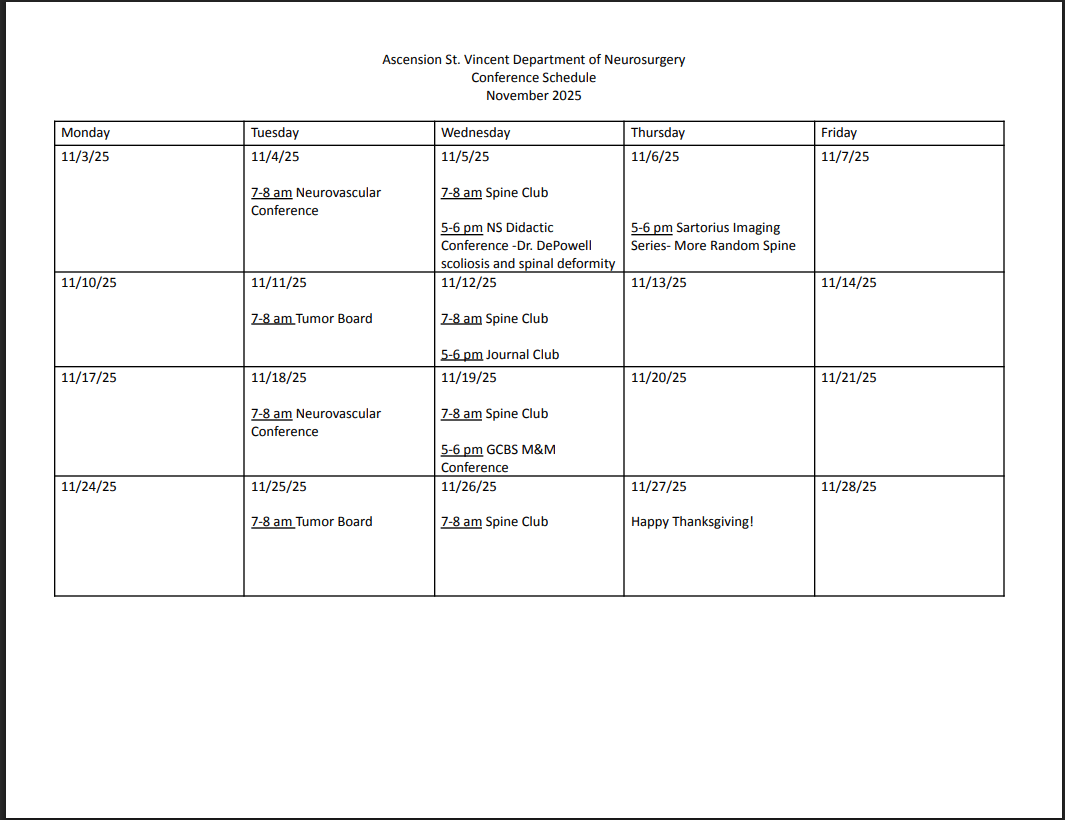Curriculum
Interns will spend their first year immersed in the basic sciences, neuro ICU, and acute neurosurgical arena, where they will build rapport with clinicians and receive a broad exposure to inpatient as well as outpatient neurosurgical care. PGY2 continues advanced work with acute neurosurgery patients and introduction to the pediatric population. In the PGY3 year residents get additional experience in pediatrics as well as a comprehensive spine rotation with an elective 3-month advanced spine experience. Tumor and functional/SRS service is the focus of the PGY4, again with the ability to extend the rotation into advanced experiences. The PGY5 year is split between neurovascular (endovascular and open vascular) and a dedicated 6 month research rotation. Finally, the 6th year serves as the chief year and the 7th as an enfolded fellowship in one of the following: complex spine, cerebrovascular/skull base, neuro-oncology, functional, pediatrics, endovascular, neurocritical care or transition to practice.
General curriculum by Post Graduate Year
PGY1: Neurology, Neuroradiology, Neuropathology (1 month each); Neuro ICU (3 months); Acute Neurosurgery (6 months)
PGY2: Acute Neurosurgery (6 months); Pediatrics (6 months)
PGY3: Pediatrics (6 months); Spine (6 months: 3 months general rotation with option to do 3 months elective advanced specialization)
PGY4: Tumor (6 months: 3 months general rotation with option to do 3 months elective advanced specialization); Functional/SRS (6 months: 3 months general rotation with option to do 3 months elective advanced specialization)
PGY5: Neurovascular (6 months: 3 months open vascular rotation with option to do 3 months elective endovascular specialization); Research (6 months)
PGY6: Chief year (12 months)
PGY7: Fellowship year (12 months- see options above)
Simulation
The William K. Nasser MD Healthcare Education and Simulation Center is adjacent to the Ascension St. Vincent Hospital campus. It is a 45,000 square foot state-of-the-art facility with simulation suites, skills training, cadaveric labs, and conference and meeting space. We will frequently use this facility for didactic education, anatomic dissections and surgical simulation.

